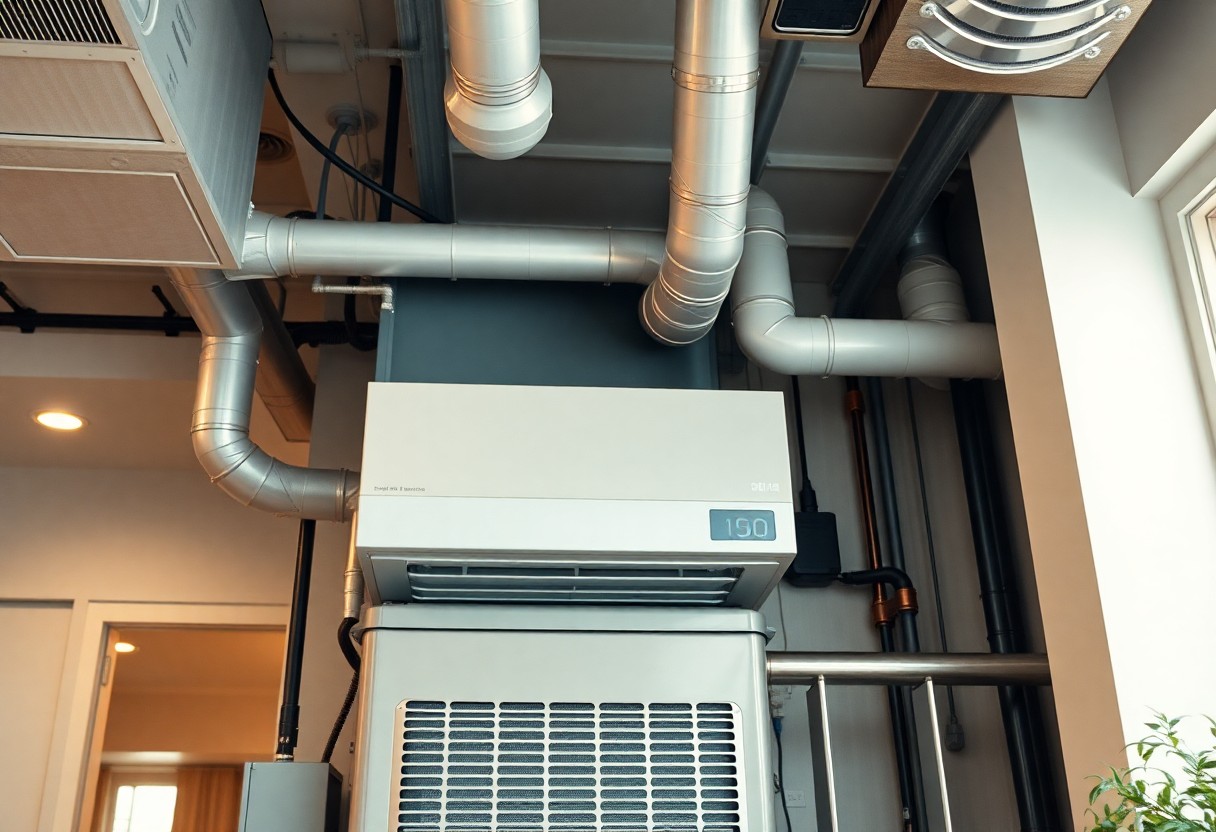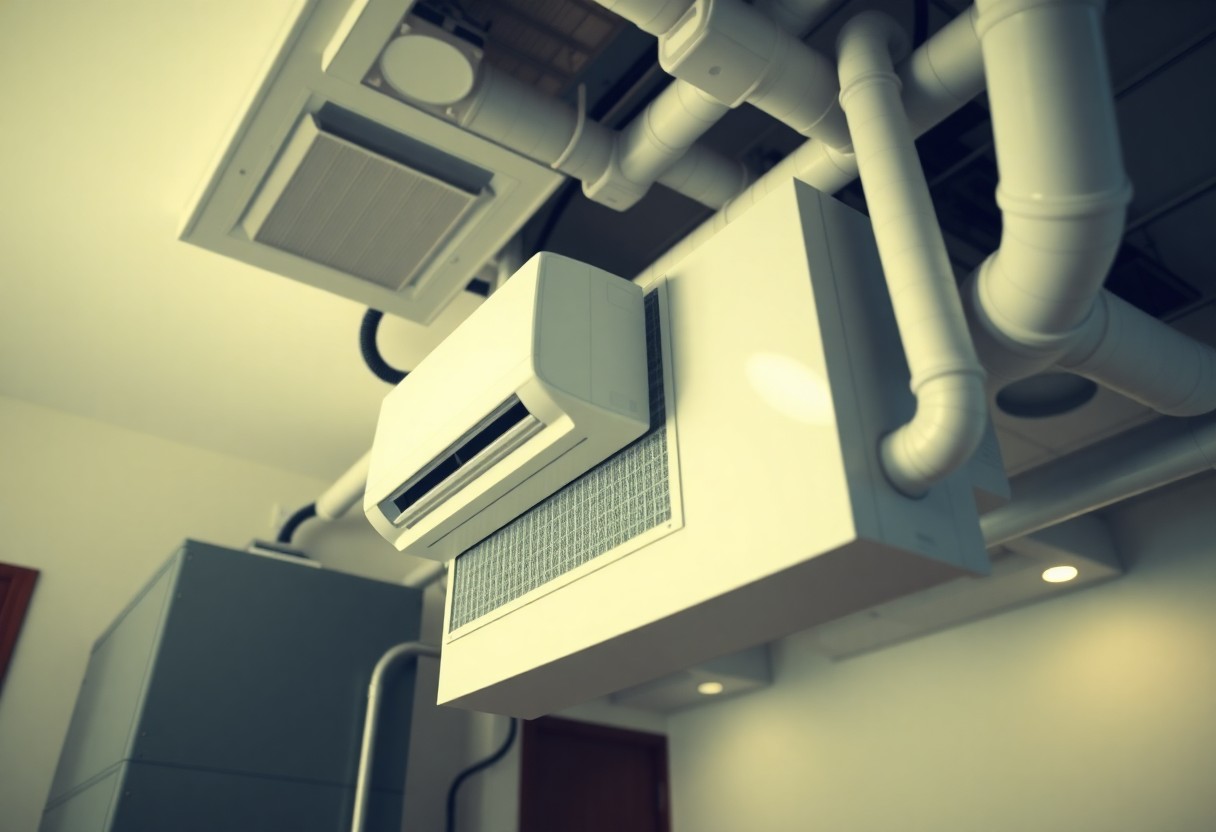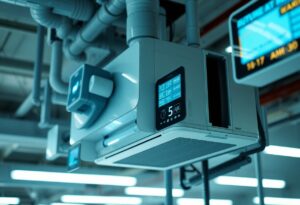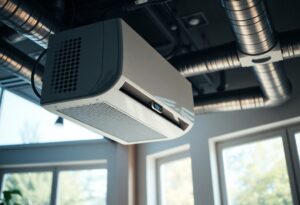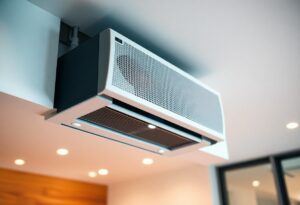HVAC Meaning Simplified: Everything You Need to Know About Heating, Ventilation, and Air Conditioning
Just like any major system in your home, understanding HVAC is imperative for maintaining your comfort and air quality. In this blog post, you’ll explore the fundamentals of heating, ventilation, and air conditioning, unraveling their roles in your daily life. From ensuring your home stays warm in the winter to providing cool air during hot summers, knowing how these systems operate can save you both money and energy. Equip yourself with the knowledge to make informed decisions about your HVAC system and enhance your overall living environment.
Key Takeaways:
- HVAC systems consist of three main components: heating, ventilation, and air conditioning, each playing a vital role in maintaining indoor comfort.
- Regular maintenance is crucial for HVAC systems to operate efficiently and prolong their lifespan, including filter changes and system checks.
- Proper insulation and sealing can significantly improve HVAC efficiency, reducing energy costs and environmental impact.
- Understanding the different types of HVAC systems, such as central air, ductless mini-splits, and heat pumps, helps in making informed choices for specific needs.
- Indoor air quality can be enhanced through ventilation systems that prevent the buildup of pollutants and regulate humidity levels.
- Energy-efficient HVAC options, including programmable thermostats and Energy Star-rated units, can lead to substantial savings on utility bills.
- Professional installation and periodic assessments by certified technicians ensure that HVAC systems function optimally and safely.
Understanding HVAC Systems
To fully appreciate HVAC systems, you must grasp their vital role in maintaining your indoor comfort. These systems encompass a range of technologies that regulate your home’s environment, ensuring optimal temperatures and air quality throughout the seasons. Understanding how these systems work collectively will empower you to make informed decisions regarding installation, maintenance, and upgrades while enhancing your home’s efficiency and comfort.
Components of HVAC
One of the key elements of an HVAC system is its various components, each contributing to your home’s climate management. These include the following:
- Thermostat: The control unit for regulating temperature.
- Furnace: Heats air and distributes it via ductwork.
- Air Conditioner: Cools and dehumidifies indoor air.
- Ductwork: Channels airflow throughout your space.
- Ventilation System: Ensures fresh air circulation.
Types of HVAC Systems
Systems vary widely in type, adapting to different needs and preferences. You should consider the following common types of HVAC systems:
- Centrally Ducted Systems: Utilize ducts for air distribution.
- Split Systems: Combines indoor and outdoor units.
- Heat Pumps: Efficiently heat and cool spaces.
- Portable Units: Offer flexibility in small areas.
- Geothermal Systems: Use ground temperature for efficiency.
The following table summarizes some common HVAC system types and their features:
| Type | Feature |
| Centrally Ducted | Distributes heated/cooled air through ducts. |
| Split System | |
| Heat Pumps | Energy-efficient option for heating and cooling. |
| Portable Units | Ideal for temporary or specific cooling needs. |
| Geothermal Systems | Utilizes renewable energy from the ground. |
The choice of your HVAC system significantly affects your energy efficiency, comfort, and operating costs. Choosing a suitable system can lead to reduced energy bills and an extended lifespan for your equipment. Ultimately, understanding your options empowers you to select the best solution for your unique needs.
- Energy Efficiency: Important for cost savings.
- Comfort Levels: Affects your living environment.
- Operating Costs: Influences your overall expenses.
- System Lifespan: This impacts how often replacements are needed.
- Technology Trends: Essential for the latest innovations.
The choice also involves evaluating the most modern options, which may include smart technology that writes the next chapter in HVAC efficiency. This further supports better energy management and user control.
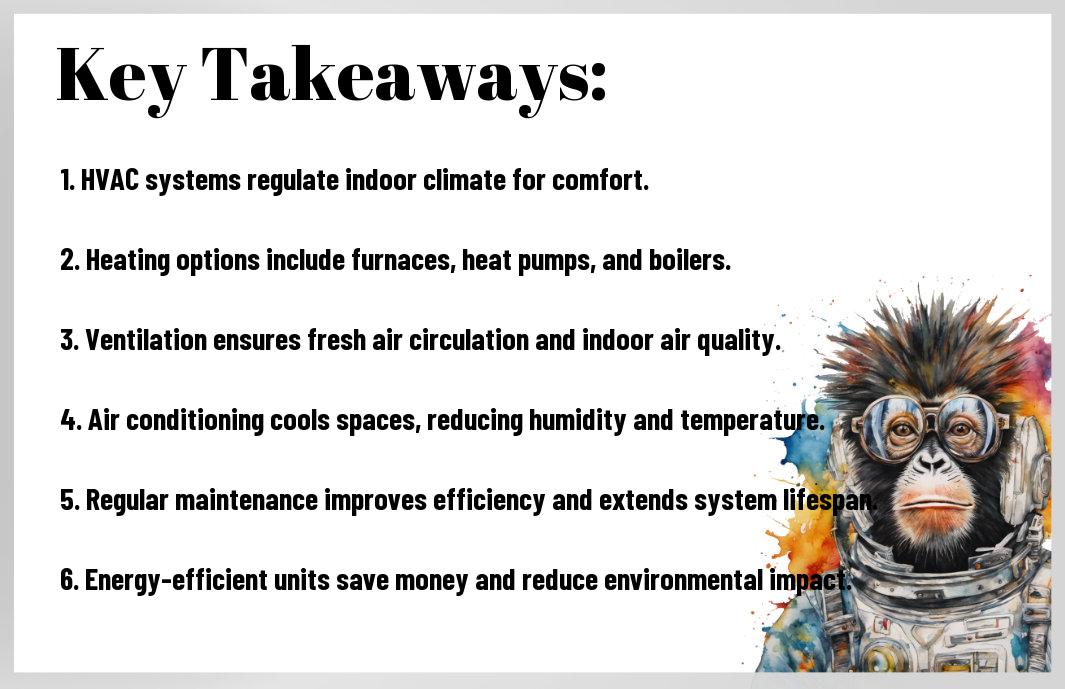
Heating Systems
While selecting a heating system for your home, it’s necessary to understand the various options available, including furnaces, heat pumps, and more. Each type of system has its unique features, benefits, and efficiency ratings that can affect your comfort and energy bills. By knowing the specifics, you can make an informed decision that best suits your heating needs and preferences.
Furnaces
Among the most common heating systems, furnaces are known for their reliability and efficiency. They operate by blowing heated air through ducts, effectively warming your space quickly. Most furnaces run on natural gas, propane, or electricity, providing you with a variety of options to match your home’s energy sources.
Heat Pumps
Below the surface of traditional heating systems, heat pumps offer an energy-efficient alternative. These systems can both heat and cool your home by transferring heat between your indoor and outdoor air. With their dual functionality, they provide versatility that can benefit you year-round.
In fact, heat pumps are often considered environmentally friendly since they move heat rather than generate it, which can result in substantial energy savings on your utility bills. Their dual capability allows you to rely on one system for both heating and cooling, making them a smart choice for year-round comfort. However, it’s important to note that their performance may decrease in extremely low temperatures, making it vital to select a unit that suits your local climate.
Ventilation Methods
After understanding the importance of ventilation, it’s necessary to explore the various methods available. Proper ventilation enhances air quality by removing contaminants and providing fresh air, making your indoor environment healthier and more comfortable. Two primary methods of ventilation are natural and mechanical, each with distinct advantages and considerations for your space.
Natural Ventilation
Across many homes, natural ventilation leverages outdoor air flow to refresh indoor air without relying on mechanical systems. This method often involves strategically placed windows, doors, and vents to facilitate air movement. Utilizing natural forces like wind and temperature differences, you can create a more sustainable and energy-efficient environment.
Mechanical Ventilation
Behind every effective mechanical ventilation system is an intricate setup designed to regulate air flow within your space. These systems utilize fans and ductwork to supply fresh air and exhaust stale air, enhancing indoor air quality. They are particularly useful in tightly sealed homes where natural ventilation is limited, ensuring that you maintain a healthy living atmosphere.
Ventilation systems can significantly impact your indoor climate, promoting better air quality while removing pollutants like allergens and moisture. With mechanical ventilation, you can enjoy a controlled environment, providing consistent fresh air supply to every room in your home. However, consider that these systems require regular maintenance to avoid potential hazards, such as mold growth if filters are neglected. Investing in quality mechanical ventilation not only improves your comfort but can also positively affect your overall well-being.
Air Conditioning Basics
Not all air conditioning systems are created equal. Understanding the comforting environment they produce begins with knowing how air conditioning works and the different types available to suit your needs. Whether you’re combating summer heat or maintaining indoor comfort, the right system plays a key role in temperature regulation and air quality.
Types of Air Conditioners
Not every air conditioning unit fits every situation, so here are some common types:
- Window air conditioners – Great for single rooms.
- Split system air conditioners – Ideal for larger spaces.
- Central air conditioning systems – provide whole-house cooling.
- Portable air conditioners – Versatile and easy to move.
- Ductless mini-split systems – Excellent for areas without ductwork.
Thou must consider your space and cooling needs when choosing.
| Type | Application |
| Window Air Conditioners | Single rooms |
| Split System | Larger spaces |
| Central | Whole-house |
| Portable | Flexible usage |
| Ductless Mini-Split | No ductwork needed |
How Air Conditioning Works
Any air conditioning system typically operates on a simple principle: it removes heat from your indoor air, making your space feel cooler. Utilizing a refrigerant, the AC absorbs heat inside your home and releases it outside, creating a continuously circulating cycle of cold air.
Hence, the process involves key components: a compressor, evaporator coil, condenser coil, and expansion valve. The compressor compresses the refrigerant into a high-pressure gas, which then travels to the condenser coil where it releases heat outdoors. As the refrigerant cools, it transforms back into a liquid and returns through the expansion valve to the evaporator coil, where it absorbs indoor heat, starting the cycle anew. Understanding this cycle is important because it influences your energy efficiency and indoor air quality. Always prioritize selecting a system that meets your cooling, efficiency, and environmental needs.
Energy Efficiency in HVAC
Keep in mind that enhancing your HVAC system’s energy efficiency not only helps the environment but also significantly reduces your energy bills. Upgrading to energy-efficient systems, ensuring proper maintenance, and utilizing smart technology can lead to remarkable savings and improved comfort in your home.
SEER Ratings
To understand the efficiency of your air conditioning system, focus on its Seasonal Energy Efficiency Ratio (SEER). This rating measures the cooling output divided by the energy consumed during a typical cooling season. A higher SEER rating indicates greater efficiency, meaning lower energy costs for you.
Tips for Energy Savings
After evaluating your HVAC system, implement these effective energy-saving tips to enhance efficiency and comfort:
- Upgrade to a high-efficiency unit with a superior SEER rating.
- Regularly change your air filters to maintain airflow and efficiency.
- Seal any duct leaks to prevent energy loss.
- Utilize a programmable thermostat for optimal temperature control.
- Schedule routine HVAC maintenance for peak performance.
After implementing these tips, you can expect a more comfortable living space along with reduced energy costs.
SEER ratings are vital in choosing an energy-efficient HVAC system. With a higher SEER, you ensure that your energy bills remain lower while enjoying adequate cooling. Additionally, consider utilizing smart thermostats, sealing windows and doors, and regular system maintenance to further enhance energy efficiency. A mindful approach to your HVAC usage will lead to a comfortable environment and significant cost savings. After reviewing these steps, you’ll find the home feels refreshingly cool during hot months without the stress of rising bills.
Common HVAC Issues
Unlike what many homeowners believe, HVAC systems can encounter a range of issues that might disrupt their efficiency. Common problems include inadequate heating or cooling, strange noises, and poor airflow. Understanding these potential issues can help you take early action, potentially avoiding costly repairs and keeping your home comfortable year-round.
Troubleshooting
Around your home, it’s wise to familiarize yourself with basic troubleshooting steps for your HVAC system. Begin by checking your thermostat settings, making sure it’s set to the desired temperature. Inspect air filters for clogs and look for any visible blockages in vents. Simple fixes can often restore your system’s efficiency and save you time and money.
Maintenance Tips
Behind every efficient HVAC system lies a solid maintenance routine. Regular upkeep can prolong the life of your unit and optimize performance. Consider the following maintenance tips:
- Change your air filters every 1-3 months.
- Schedule professional inspections at least once a year.
- Clean your coils and fins to avoid blockages.
- Keep the outdoor unit clear of debris.
Any neglect can lead to inefficiencies and costly repairs down the line.
It’s crucial to take your HVAC maintenance seriously to ensure your system runs smoothly. Routine checks will help identify potential issues early, saving you from more severe problems later. Key maintenance actions include:
- Checking refrigerant levels to avoid underperformance.
- Monitoring ducts for leaks to maintain airflow efficiency.
- Inspecting electrical connections for any signs of wear.
- Tested thermostats and sensors for accurate readings.
Any overlooked detail during maintenance can lead to significant discomfort or even dangerous conditions.
To wrap up
Summing up, understanding HVAC systems can greatly enhance your comfort and energy efficiency in your living space. By knowing the roles of heating, ventilation, and air conditioning, you can make informed decisions about maintenance, upgrades, and energy use. This knowledge enables you to optimize your indoor environment, ensuring it is both pleasant and safe. With insights into HVAC technology, you are well-equipped to tackle any issues and improve your overall quality of life at home.
FAQ
Q: What is HVAC, and why is it important?
A: HVAC stands for Heating, Ventilation, and Air Conditioning. It is a system that controls the interior environment of buildings by managing temperature, humidity, and air quality. An effective HVAC system enhances comfort, improves indoor air quality, and can lead to energy savings.
Q: How does the heating component of an HVAC system work?
A: The heating component typically uses a furnace, heat pump, or boiler to generate warmth. Furnaces usually burn fuel to create heat, while heat pumps transfer heat from the outside air or ground. The generated warmth is distributed through ducts or radiators, maintaining a comfortable temperature indoors.
Q: What role does ventilation play in HVAC systems?
A: Ventilation is vital for maintaining good indoor air quality and involves the exchange of indoor and outdoor air. It helps remove contaminants, excess moisture, and odors. This can be achieved through natural ventilation (open windows) or mechanical ventilation (fans and air exchangers) to ensure a fresh and healthy environment.
Q: How does air conditioning function within an HVAC system?
A: Air conditioning systems cool indoor spaces by removing heat and humidity from the air. This process typically involves the circulation of refrigerant through coils, where it absorbs heat from the indoor air and releases it outside. The cooled air is then circulated back into the living space through ducts.
Q: What are the energy efficiency ratings to look for in HVAC systems?
A: Key energy efficiency ratings include the Seasonal Energy Efficiency Ratio (SEER) for air conditioning units and the Annual Fuel Utilization Efficiency (AFUE) for furnaces. Higher ratings indicate more energy-efficient systems, which can lead to lower utility bills and reduced environmental impact.
Q: How often should I perform maintenance on my HVAC system?
A: Regular maintenance is recommended at least once a year for heating and cooling systems. This includes tasks like changing filters, checking refrigerant levels, cleaning coils, and inspecting ductwork. Regular maintenance helps ensure optimal performance and can extend the lifespan of the equipment.
Q: What factors should I consider when selecting an HVAC system for my home?
A: Key factors include the size of your home, local climate, energy efficiency ratings, and your specific heating and cooling needs. Additionally, consider the system’s installation costs, warranty options, and the reputation of the manufacturer and service providers.
This post has been written by Team HVAC Talk Magazine. Stay informed and connected with the latest in HVAC—join us for expert advice, troubleshooting tips, and news updates. Don’t miss out; follow us now! #HVACExperts #HVACTips #StayInformed #HVACProTalk.
Learn more and join our mailing list for updates.
